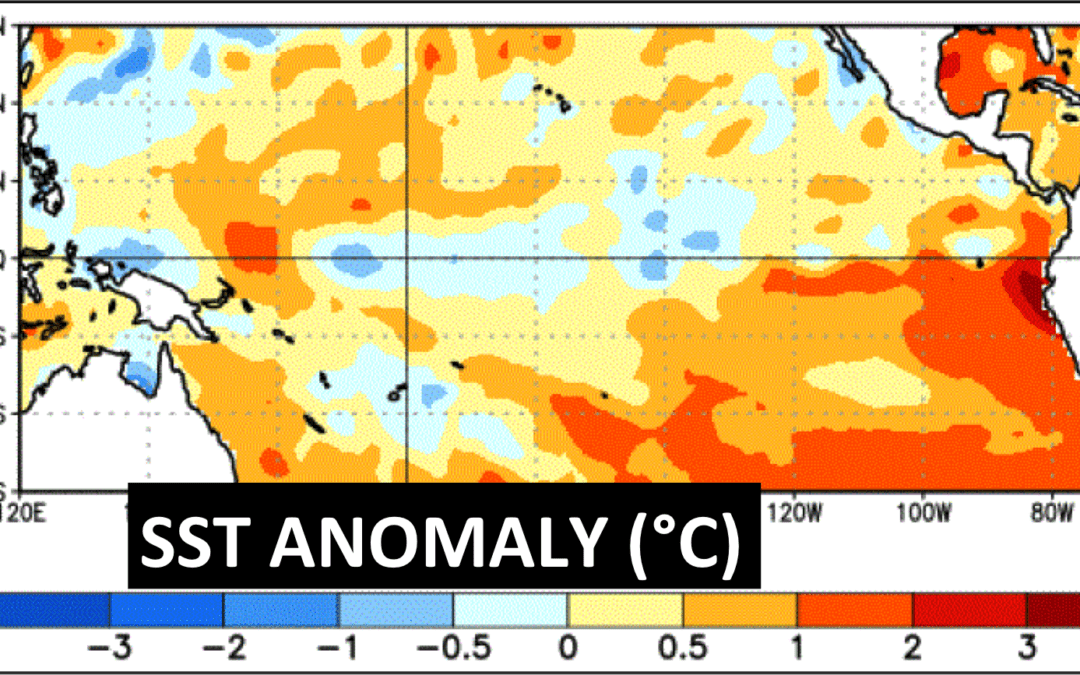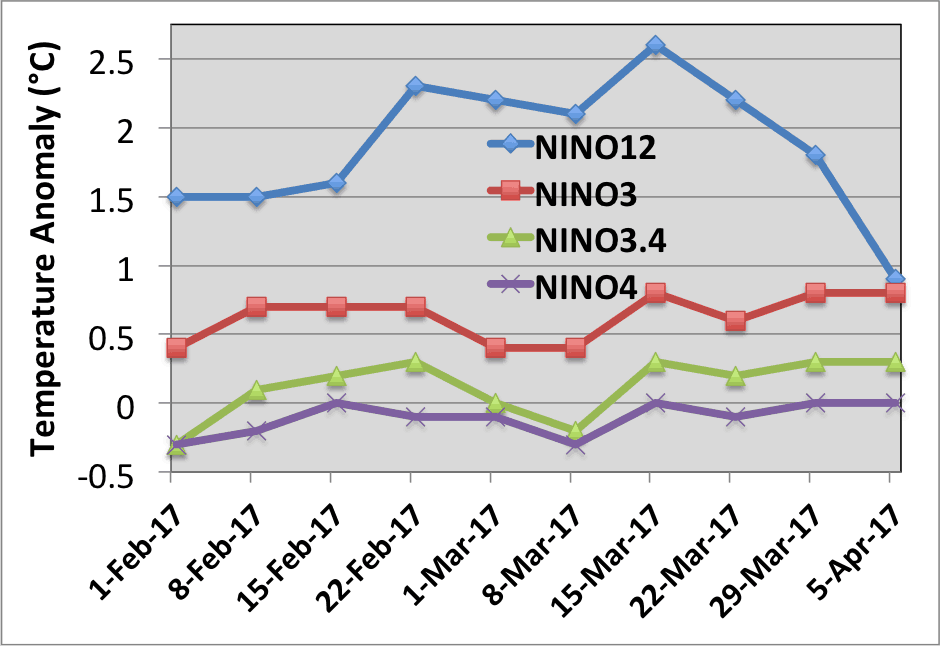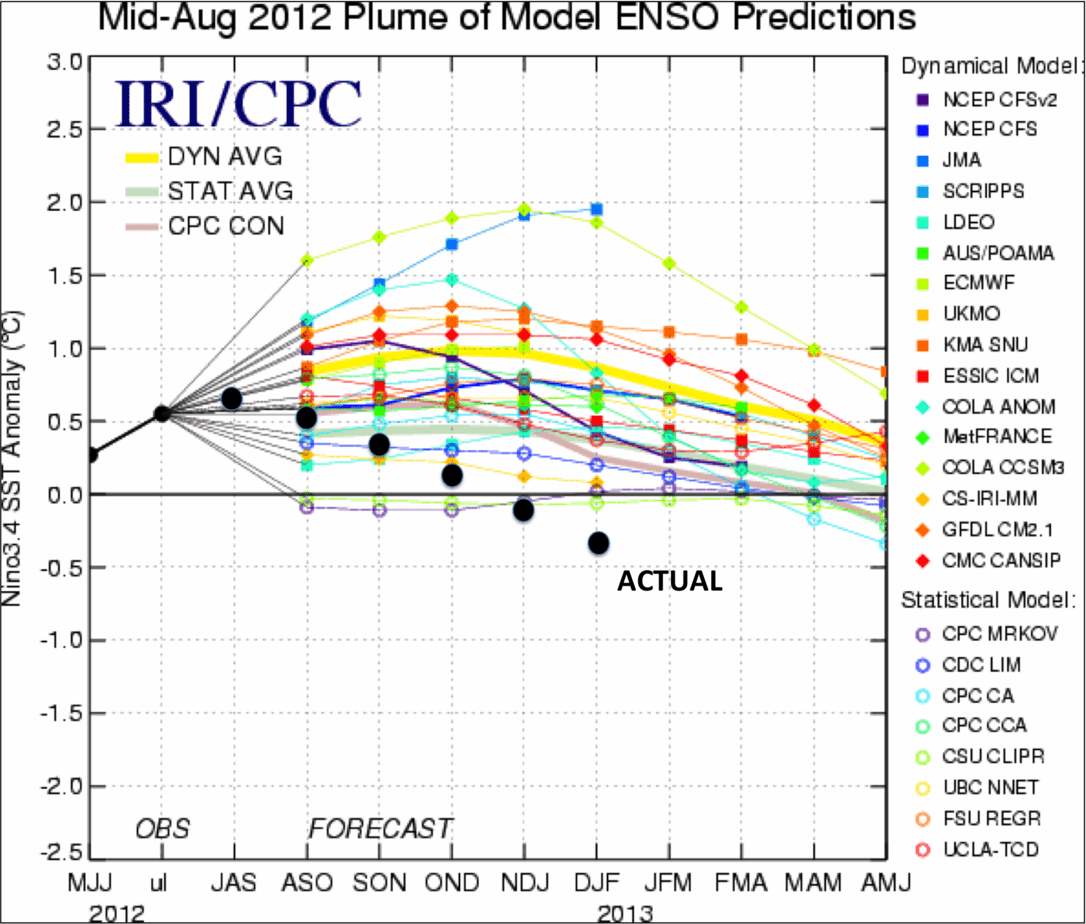Current El Nino Status
Forecasters and models alike are warning that a potential El Nino is on the way. Consequently, worries of major crop issues across the globe are abound. The Nino 1+2 index jumped significantly in early February, leading to warm anomalies off the West Coast of South America. The other indices (Nino 3, 3.4 and 4) are slowly catching up as well. The graph below shows the latest weekly values from NOAA.
DATA SOURCE: NOAA/NCEP/CPC
FORECAST
The million dollar question is whether or not a full-fledged ENSO event will form by winter. Too soon to say? There is often a “spring barrier” for El Nino predication accuracy. Models do not yet have the capability to accurately forecast 7-9 months in advance with strong certainty. A great example of this happened in 2012. The model forecast from August 2012 is shown below. They clearly favor ENSO development. However, one never occured (black circles showing actual values).
DATA SOURCE: NOAA/NCEP/CPC, IRI, and all model development Institutions.
The severity and timing of the El Nino formation will determine whether global crops are impacted. Warm sea surface temperatures in the Western Pacific causes less rainfall to fall during the Indian Monsoon (June-Sept). Flooding during Brazil’s cane crush could limit sugar production. The summer & winter demand for natural gas may also be impacted. Knowing the ENSO forecast will give traders a heads up before major commodity price moves. Our proprietary analysis (that we only give to our clients) on the models and teleconnection will provide the true chance of whether or not poor crop conditions will occur in 2017/18.
COVER IMAGE SOURCE: NOAA














